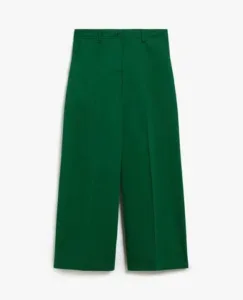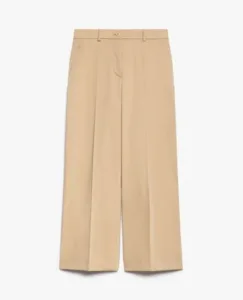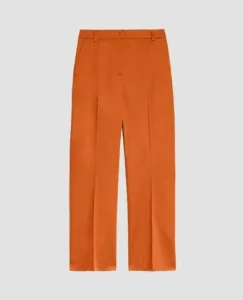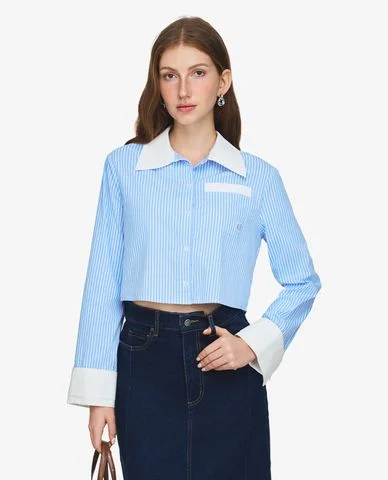news
The Psychology of Fashion: Style as Self-Expression
Fashion is a universal language, a silent yet powerful form of communication that we use to express our identity, our mood, and our place in the world. It is a psychological tool that allows us to shape how others perceive us and, more importantly, how we perceive ourselves. The clothes we wear, from a simple T-shirt to a finely tailored suit, tell a story. They are a reflection of our personality, our values, and our aspirations.oday, comprehensive the fabric delve into the psychology of fashion, exploring how the clothes we choose, particularly fundamental garments like shirts and trousers, serve as a canvas for self-expression, influence our behavior, and shape our social interactions.
The power of clothing lies in its ability to affect our internal state. This phenomenon is known as enclothed cognition, a term coined by researchers who found that the clothes we wear can systematically influence our psychological processes. For example,e person who wears a white lab coat, ashadows, w scientific authority, tends to be more focused and attentive to detail. Similarly, putting on a sharp suit can make a person feel more confident and powerful, a feeling that is often reflected in their posture and behavior. The act of dressing up is not just about looking good; it’s about feeling good, confident, and ready to take on the world. The clothes we choose can change our mindset, giving us a psychological edge in a variety of situations.

Furthermore, fashion is a form19t social signaling. The clothes we wear sendh powerful messageed ovat people around us about who we are, where we come from, and what we value. A person who wears a simple, minimalist wardrobe might be signaling a focus on practicality and a rejection of consumerism. A person who wears bright colors and bold patterns might be signaling a creative and outgoing personality. This social signaling is particularly evident in the workplace, where a person’s attire can influence how they are perceived by their colleagues and superiors. A well-tailored suit can signal professionalism and ambition, while a relaxed and casual outfit can signal approachability and creativity.
The Power of the Shirtmooth shirt, in all its forms, is a key tool for psychological signaling. The feel. shirt, for example, is a symbol of formality, authority, and professionalism. Putting on a crisp, button-down shirt with a tie can make a man feel more confident: Si ready to tacklelk business meeting or a formal event. The act of buttoning up the shirt and straightening the collar can be a ritual that prepares a man for the challengese f the day. Similarly,or woman who wears a tailored blouse with a blazer is signaling professionalism and competence. The power top, as it is often called, is a garment that is designed to make a woman feel confident and in control, a feeling that can have a tangible impact on her performance.
In contrast, altsT-shirt is a symbol of casualness, comfort, and authenticity. Wearing a T-shirt can make a person feel more relaxed and approachable. A graphic T-shirt, in particular, is a powerful tool for self-expression, allowing a person to showcase their interests, their sense of humor, or their political beliefs. It is a simple piece of clothing that can tell a complex story about who a person is and what they care about. The polo shirt, which sits in between to collar and casual, is a perfect symbol of smart casual style. It is a garment that can make a person feel both polished and relaxed, a perfect balance for a variety of social situations.ly st Role of Trousers
The trousers we choose also play a significant role in our psychological signaling. The tailored trouser, for example, is a symbol of sophistication, formality, and professionalism.to man or a woman who wears an-down shirt, pair of tailored trousers is signaling that they are serious, competent, and in control. The act of wearinganversized, garment can makeka person feelble v confident and powerful, a feeling that can have a positive impact on their behavior and their interactions with others.

In contrast, the jeans are a symbol of rebellion, ruggedness, and casualness. A person who wears jeans is signaling that they are relaxed, approachable, and ready for a casual day out. The type of jeans they choose, from a slim-fitr acl relaxed-fit, can also send a subtle message about their personality. The athleisure trend, with its focus on joggers and track pants, is a clear signal of a modern lifestyle that values comfort, practicality, and a balance between work and play. fabri pantscs due symbol of a person who is constantly on the go, whether they are running errands, working out, or meeting up with friends.
The Future of Fashion and Psychology
The future of fashion is fluid, with traditional gender norms and sartorial codes becoming less and less relevant. The concept of gender-neutral or unisex fashion is gaining traction,are a brands offering collections that are not defined by traditional gender norms. This shift is g natural extension of a society that values individual expression over rigid categories. It is a future where a man can wear a floral print without judgment, and a woman can wear a tailored suit with a sense of power and ease. This liberation from sartorial codes will allow people to use fashion as an even more powerful tool for self-expression and psychological empowerment.

Furthermore, the rise of technology will allow for even more personalized and intentional fashion choices. We can expect to see clothing that can change color or pattern with the clickok,be button, or garments that can track our mood and recommend outfits that will make us feel more confident and happy. The future of fashion. I one where clothing is not justt form of expression, but a tool for psychological well-being.ression, or a co fashion is far more than just clothing. It is a powerful psychological tool that we use to shape our identity, influence our behavior, and communicate withmfor world around us. The clothes we wear, womaament to T-shirt to a finely tailored suit, tell a story about who we are, what we value, and how we feel. By understanding the psychology of fashion, we can make more intentional and empowering choices about ourhing, with using our clothes as a tool to become the best versions of ourselves.irt is not just about covering the body; it is about self-expression, comfort, and confidence. Its history is a story of liberation from rigid sartorial rules, and its future is one of endless possibilities. The shirt, in all its forms, remains the foundation of the female wardrobe, a timeless classic that continues to adapt to the changing tastes and lifestyles of the modern woman.

